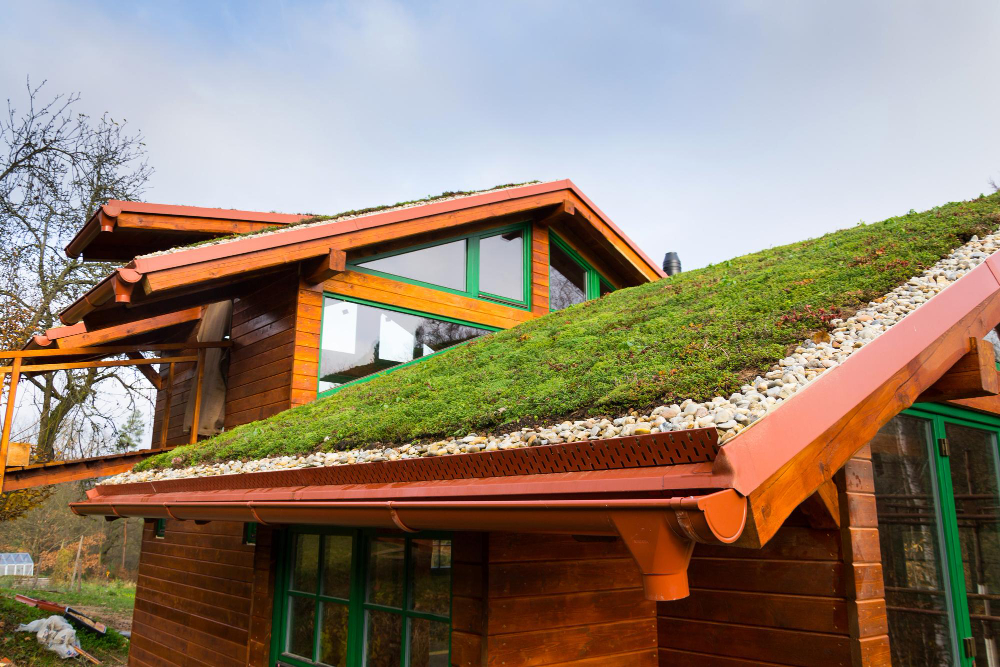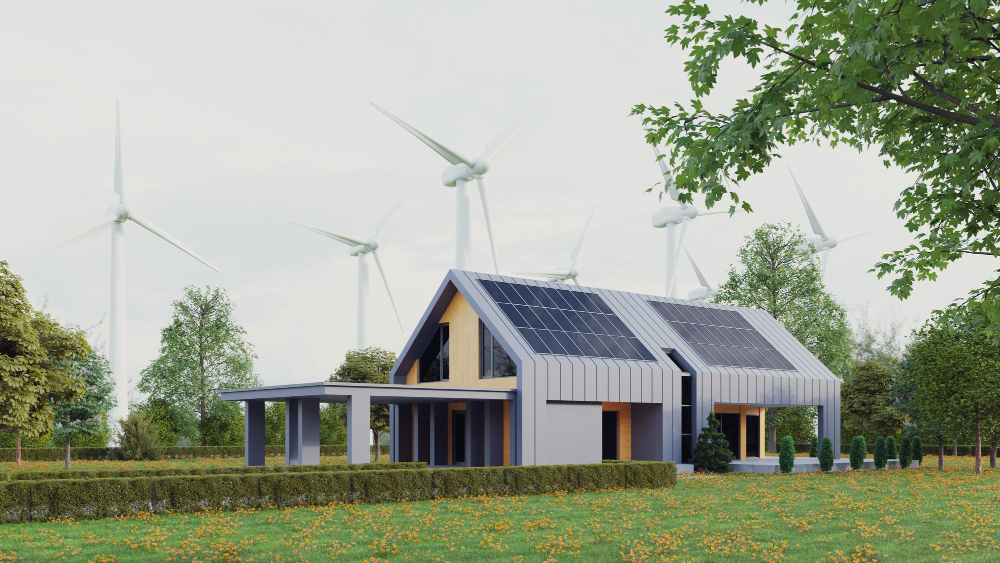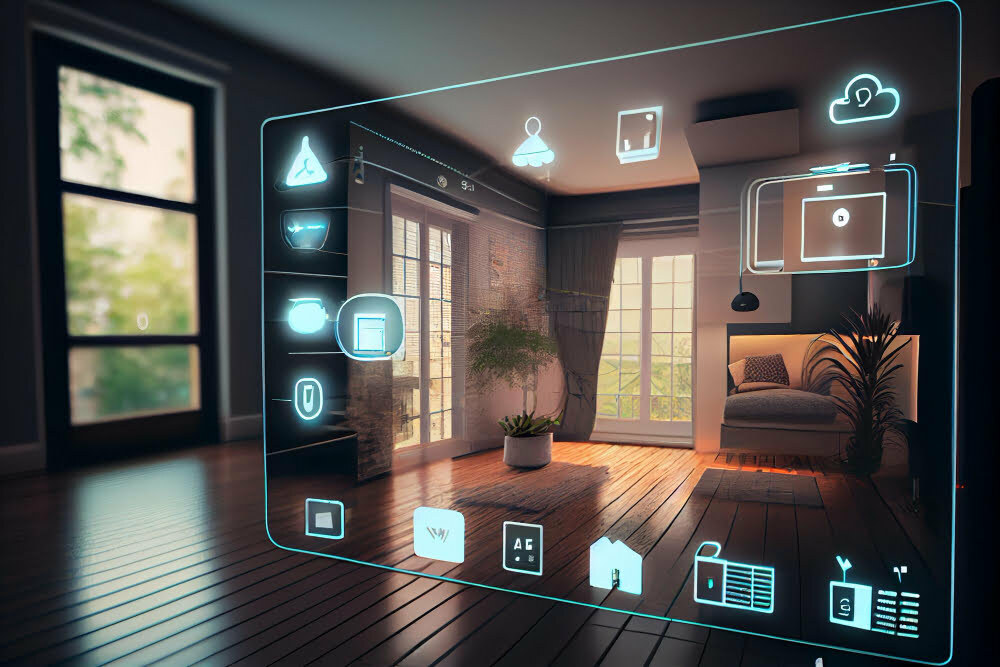Last updated on
In the era of environmental consciousness and sustainable living, the concept of eco-friendly homes has gained significant traction. Among the various components that contribute to building a sustainable home, the roof stands out as a critical element.
Choosing the right roofing materials and design not only impacts the energy efficiency of a house but also plays a crucial role in reducing the overall environmental footprint. This guide aims to shed light on the world of high-quality, eco-friendly roofing, providing insights into materials, designs, and practices that align with the principles of sustainable living.
The Impact of Roofing on Sustainability

The choice of roofing materials and design can significantly impact the environmental sustainability of a home. Traditional roofing materials, such as asphalt shingles, often contribute to landfill waste and have a shorter lifespan compared to more sustainable alternatives.
Additionally, the heat absorption of certain roofing materials can contribute to the urban heat island effect, exacerbating temperature increases in urban areas.
Opting for eco-friendly roofing materials not only reduces the environmental impact but also offers long-term benefits in terms of energy efficiency and durability. Green roofs, solar panels, and cool roofing materials are among the innovative solutions that contribute to a more sustainable and energy-efficient home.
Various roofing specialists and companies now offer a range of eco-friendly roofing options, making it easier for homeowners to make sustainable choices. Not to mention significant cost savings on energy bills.
Green Roofs: Nurturing Nature Atop Your Home

Green roofs, also known as living roofs, are a fascinating eco-friendly roofing option gaining popularity for their numerous environmental benefits. These roofs incorporate a layer of vegetation over a waterproof membrane, providing insulation and reducing stormwater runoff.
Green roofs act as natural insulators, regulating indoor temperatures and reducing the need for artificial heating and cooling.
The vegetation on green roofs also helps filter pollutants from the air, promoting cleaner and healthier surroundings. Additionally, the extended lifespan of the roofing membrane due to reduced exposure to the elements contributes to the overall sustainability of the home.
While the installation of green roofs requires careful planning and expertise, the long-term benefits for both the environment and homeowners make them a compelling choice for sustainable living.
Keep in mind that before installing a green roof, it is essential to consult with a professional to determine if your home can support the weight and structural requirements of this type of roofing.
Solar Roofing: Harnessing Clean Energy from Above

Solar roofing is a cutting-edge solution that seamlessly integrates renewable energy generation with the primary function of a roof. Solar panels or solar shingles can be integrated into the roofing structure to harness clean energy from the sun. This not only reduces reliance on non-renewable energy sources but also allows homeowners to generate electricity for their use or contribute excess energy back to the grid.
The environmental impact of solar roofing extends beyond energy production. By utilizing the abundant and clean energy from the sun, solar roofing reduces greenhouse gas emissions associated with traditional energy sources. The ongoing advancements in solar technology make it an increasingly accessible and efficient option for homeowners committed to sustainable living.
Cool Roofing: Keeping It Cool and Energy-efficient

Cool roofing is a smart solution designed to reflect more sunlight and absorb less heat than traditional roofing materials. This innovative approach helps mitigate the urban heat island effect by reducing the heat absorbed and retained by the roof. Cool roofing materials typically have higher solar reflectance and thermal emittance, keeping the roof surface cooler even in direct sunlight.
By lowering the roof temperature, cool roofing contributes to energy efficiency within the home. The reduced heat absorption translates to lower cooling costs during hot weather, making it an economically and environmentally sensible choice. Common cool roofing materials include reflective coatings, single-ply membranes, and reflective tiles, each offering a distinct set of benefits for sustainable home design.
Creating a sustainable home involves a conscious effort to make environmentally friendly choices in every aspect of construction, and roofing is no exception. The roofing materials and design you choose can significantly impact the overall sustainability of your home.
Green roofs, solar roofing, and cool roofing are just a few examples of innovative and eco-friendly options that offer a blend of environmental benefits, energy efficiency, and long-term durability.
As you embark on the journey of building or renovating a sustainable home, consider the climate, local regulations, and your specific goals. Consult with experts in eco-friendly construction to explore the best roofing options tailored to your needs.
Remember, the investment in sustainable roofing not only benefits the planet but also contributes to a healthier, more energy-efficient, and resilient home for you and future generations. In the ever-evolving landscape of sustainable living, the roof above your head becomes not just a shelter but a testament to your commitment to a greener, healthier world.
Related reading:
Table of Contents





